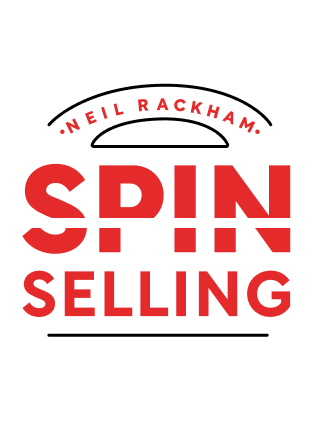

This article is an excerpt from the Shortform summary of "Spin Selling" by Neil Rackham. Shortform has the world's best summaries of books you should be reading.
Like this article? Sign up for a free trial here .
What is the SPIN Sales model? Can the SPIN Sales model help you become a more effective salesperson?
The SPIN Sales model is a way to approach sales that focuses on problem-solving. You can use the SPIN sales model in any sales situation to find solutions to customers’ problems.
The SPIN Sales Method
Rackham developed and extensively tested a new model for major sales, SPIN Selling, which uses a questioning method capsulized by the acronym SPIN: S-Situation, P-Problem, I-Implications, and N-Need-Payoff. The SPIN Selling method is about how to apply this method to larger sales.
Sales models have continued to evolve in the 32 years since the book was published in 1988; a variety of models are debated, taught, and practiced. But the SPIN selling model is still core sales practices, and the book has become a classic and a template for successful selling.
The SPIN Selling Approach
In the SPIN selling model, Huthwaite researchers found that successful reps in large sales spend the most time on the investigating stage and handle it differently from the traditional approach.
In traditional sales, reps emphasize product features and use standard techniques to address objections and close a sale. In contrast, successful reps ignore traditional techniques and instead focus on asking four different types of questions in a certain order, the SPIN sequence. Here’s how to use the SPIN sales method:
1) S-Situation questions: Start by asking fact-finding and background questions, such as, “What do you see as the company’s biggest growth opportunities?” Asking too many of these questions can impose on the customer’s time and patience, so use them judiciously.
2) P-Problem questions: Once you understand the customer’s situation, ask questions that explore problems or issues your product or solution can solve—for instance, “Are you concerned about meeting your clients’ quality standards with your aging equipment?” Less experienced reps don’t ask enough of these questions.
3) I-Implication questions: Asking good situation and problem questions may be enough to win a small, uncomplicated sale. However, you need to go further in large sales and ask more sophisticated questions that explore the implications or ramifications of a customer’s problem—for example, “How will this affect your fourth-quarter results?” or “What will this mean for your biggest customer?” The point is to underscore a problem’s significance, and create an urgency to address it. These are more difficult questions to frame, even for experienced salespeople.
4) N-Need-payoff questions: These questions lead the customer to articulate the benefits of your product or solution. For example, you might ask, “How useful would it be if we could increase your output by 10%?” or “How would being able to reduce errors help you?” When the customer links the value of solving a problem with the capabilities of your product, he’s more inclined to accept your product as the best solution. Need-payoff questions contribute strongly to success in large sales.
The SPIN Sales Model in Action
The SPIN sales model moves the customer through a naturally unfolding process of uncovering and developing implied needs, evolving them into explicit needs, and gaining the customer’s commitment to take action.
Here’s a summary showing the SPIN selling method flow:
- The seller asks situation questions to understand the buyer’s context, leading to
- problem questions that help the buyer uncover implied needs,
- which the seller develops through implication questions that emphasize the magnitude of the problem,
- leading the buyer to state explicit needs,
- to which the seller responds with need-payoff questions,
- which allow the buyer to identify benefits, which contribute strongly to sales success.
In a nutshell, research indicates that successful salespeople do the following with the SPIN sales method:
- Ask situation questions, but not many, to understand the customer situation.
- Ask problem questions to uncover implied needs.
- In smaller sales, reps may offer solutions next. But in larger sales, reps ask implication questions emphasizing the magnitude of the problem and the urgency of solving it.
- Ask need-payoff questions to get the buyer to identify benefits of the seller’s solution.
Four Steps for Implementing the SPIN Sales Model
Successful use of the SPIN sales model requires a commitment to diligently practice the skills. Here are four steps for translating the SPIN selling method and techniques into practice:
1) Focus Your Planning on the Investigating Stage
When reps plan sales calls, they tend to focus on what they will tell the customer about the product (the demonstrating value phase) instead of the questions they should ask. But it’s critical to first develop the customer’s needs by asking questions, so that she wants the value your product can deliver. Investigating is the most important stage, so focus on planning your probing questions (the SPIN questions).
2) Develop and Practice Questions Following the SPIN Sequence
Start with the easier situation and problem questions first. When you have a handle on them, move on to the more difficult types of questions.
- Determine whether you’re asking enough questions to begin with. If you’re spending most of the call talking about features, scale back and start asking situation questions instead. Do this until asking questions feels as natural as telling about features.
- Plan problem questions. Plan and ask at least a half-dozen problem questions on each call (focus on quantity, not quality).
- Plan implication questions. Once you’ve mastered the skill of uncovering problems, start planning and asking implication questions. This may require a few months’ practice. Imagine the customer saying, “so what?” in response to a problem, and think about how to answer that by making the problem bigger. Then phrase your arguments as questions.
- Plan need-payoff questions. Rather than presenting benefits, focus on asking questions that get the customer to tell you how your solution will benefit him—for instance, ask, “What do you see as the pluses of this?” and “How would that help?”
3) Think of Your Product as a Problem-Solver
Rather than focusing on your product or service’s features and advantages, think of the ways it solves customer problems. Write down the problems the product is intended to solve, then use the list to plan your SPIN selling model questions.
4) Plan, Implement, and Review
Planning your sales call and acting on your plan help to embed new skills in your mind. But you learn even better by reviewing and analyzing your calls afterward to see what you can do better the next time.
Some helpful questions to ask yourself are:
- Did I accomplish what I intended to in the call?
- What would I do differently if I could do the call over?
- What have I learned that I can use to improve future calls with this customer?
- What have I learned that I can use in all of my calls?
Don’t be satisfied with just forming an overall impression of how a call went. Delve into the details—for instance, consider which questions had the greatest effect. Only understanding the details of the SPIN sales method will help you improve your future performance.
The behavioral details outlined in this book are proven by research to be the building blocks of successful sales. Your attention to the details will determine your success.
The SPIN Sales model can evolve alongside new methods of sales. Salespeople are consistently learning about new ways of selling, and the SPIN Sales model is one of the most effective methods out there.

———End of Preview———
Like what you just read? Read the rest of the world's best summary of Neil Rackham's "Spin Selling" at Shortform .
Here's what you'll find in our full Spin Selling summary :
- What the SPIN in SPIN Selling stands for
- How to demonstrate real value to the person you're selling to
- How to get commitment from your customer to close the sale fast







Saudações carissimos,
Excelentes conteúdo SPIN.
Obrigado e bom trabalho
Atentamente,
Martinho Kanoquena Tavares